- Call us: 01444 237070
- Contact Us
- Stores
- Sign In / Register
-
- Back
- Used Cameras
- Used Accessories
- Used Lenses
- Used Video
- Used Film Equipment
- Used Stock Alert
- Used Blank Test
- Sell or Part Exchange
- Used Clearance
- Recently Added Used Equipment
- Park Picks
- All Used Black Friday Deals
- Faulty
- Trade-In
- Blog
- New in
- Call us
- Contact us
- Stores
- Sign in
- Categories
- Tips & Inspiration
- Reviews
- News
- Events
- Features
- Buying Guides
- Competitions
Panasonic Lumix S1 II vs S1 IIE Review
Panasonic has expanded its full-frame L-Mount camera lineup with not one, but two new cameras that arrived in May 2025. They kick off with the high-speed Lumix S1 II, which is a flagship-level video-first hybrid all-rounder, which is joined by the photo-centric S1 IIE. Both feature signifiant improvements over previous Lumix cameras, but with a clear distinction between the two models.
Panasonic Lumix S1 II Hands-on Video Review
The S1 II is features a new high-speed partially stacked full-frame sensor, which is a first for the L-mount, aimed at content creators who need faster speeds, while the S1 IIE focuses more on slower-paced hybrid shooting without the cost of the new partially stacked sensor. Both share many internal upgrades, including improved phase-detect AF, refined colour science, and updated dual card slots.
But which is right for you? Find out in our first-look Panasonic Lumix S1 II vs S1 IIE review, which features Gareth’s hands-on video, sample images and a specs comparison table for you to establish, which is the perfect camera for your content creation.
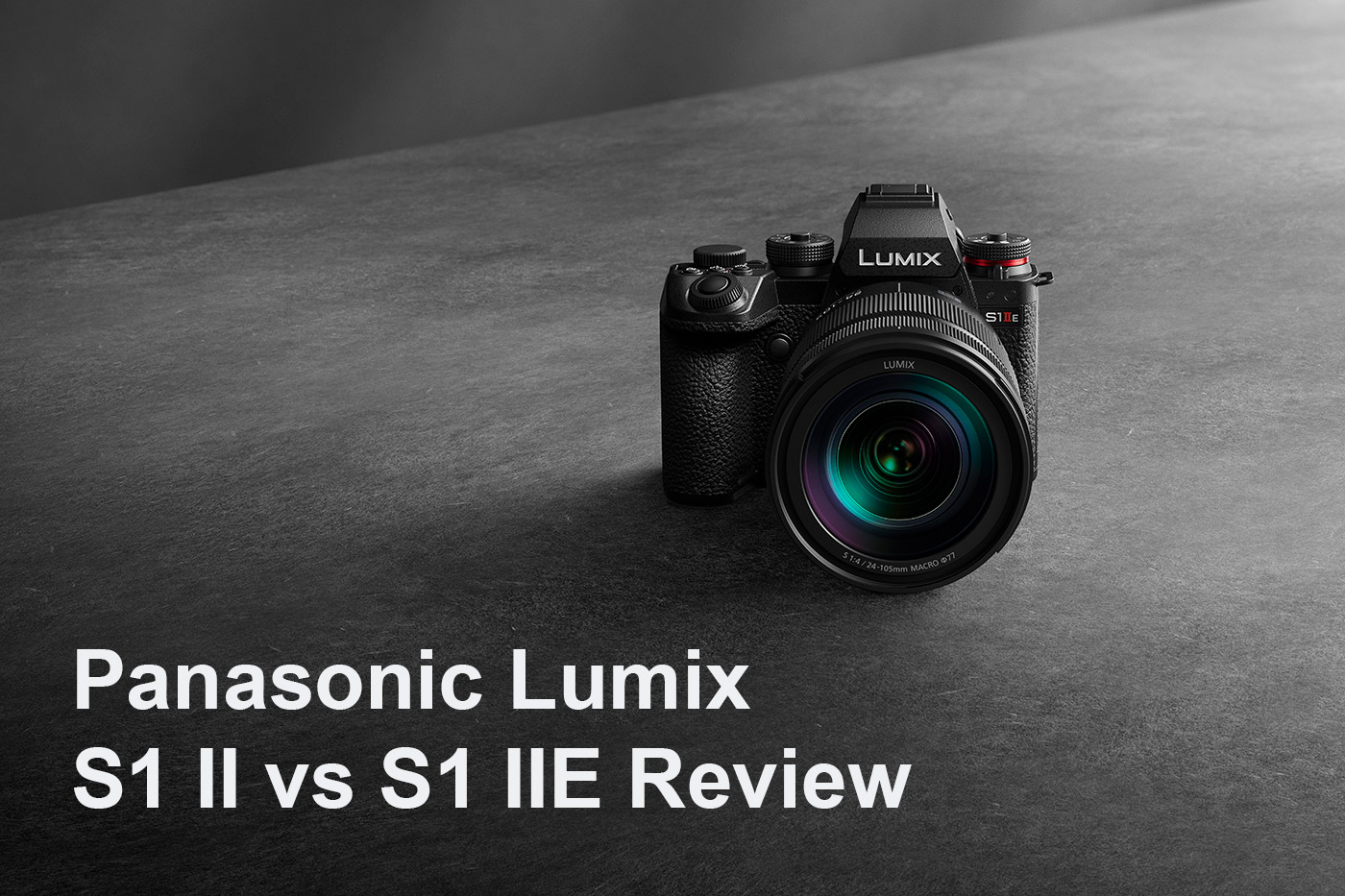
What’s New in the Panasonic S1 II and S1 IIE?
While the original Lumix S1 launched back in 2019, a more relevant comparison might be the S5 IIX from 2023. The new 2025 S1 II and S1 IIE build on that foundation and position themselves as highly capable hybrid cameras for stills and video, offering cutting-edge features including:
- A newly developed 24.2MP full-frame partially stacked CMOS sensor in the S1 II
- Open Gate 6.3K 30p (both) plus 5.1K 60p (S1 II)
- 779-point Phase Hybrid autofocus with enhanced subject recognition
- Updated 5-axis in-body stabilisation up to 8.0 stops (CIPA 2024 standard)
- New Urban Sports AF mode for unpredictable urban-inspired subjects
- Enhanced high speed shooting *more details below
- Dual card slots now with CFexpress Type B and SD UHS-II
- Direct SSD recording and backup via USB-C
- REAL TIME LUT support
- Native ARRI Log C3 support via a paid-for update
- Support for ProRes (internal) and Blackmagic RAW via external recorder
- Both cameras include an upgraded 5.76M-dot OLED viewfinder
- Upgraded vari-angle touchscreen LCD
- New Stills/Video/S&Q switch and a front record button
- Tally lamp and wireless TC sync
- New live-streaming and UVC/UAC webcam support
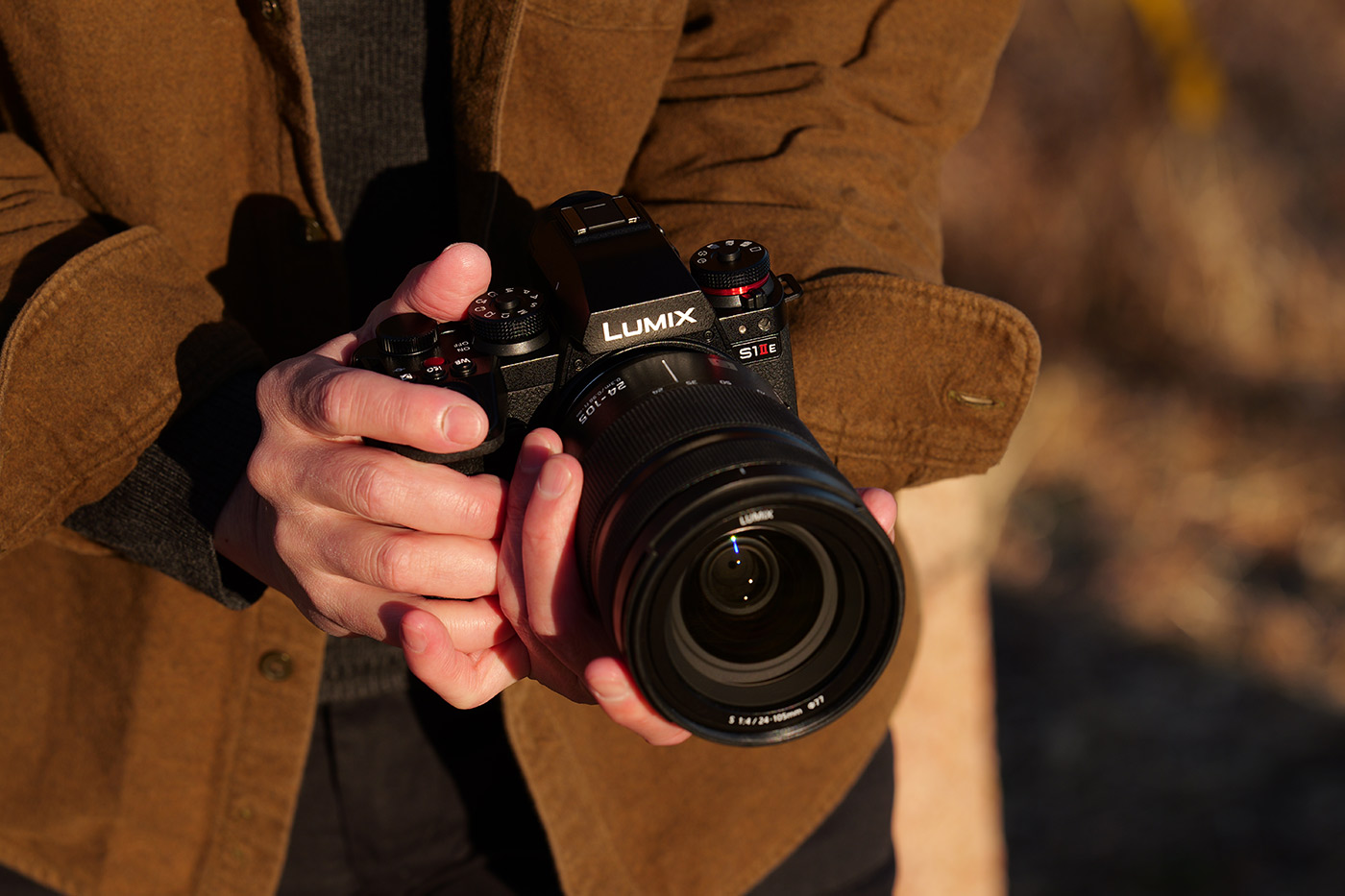
What’s the Difference Between the Panasonic Lumix S1 II vs S1 IIE?
Although the two camera look nearly identical, there are some key differences between the two.
- The S1 II has a partially stacked sensor, enabling blackout-free burst shooting at 70fps and reduced rolling shutter. The S1 IIE has a conventional CMOS sensor with a maximum 30fps shooting in electronic shutter mode.
- The S1 II supports 5.1K Open Gate at 60p and 4K 120p, whereas the S1 IIE tops out at 6K30p and 4K60p.
- The S1 II achieves up to 15 stops of dynamic range in V-Log with Dynamic Range Boost mode
- The S1 II body costs more than the S1 IIE, which we highlight in the next section
If you shoot high-speed subjects such as sports and action, or need faster speed from Open Gate video without rolling shutter effects, the S1 II is the right choice. Otherwise, the S1 IIE delivers similar image quality, AF performance and colour science at a more affordable price.
Let’s look at available kits and prices in the UK next.

Sample 01, Panasonic Lumix S1 II with the 24-60mm f/2.8 lens @60mm. Camera settings: 1/1000 sec. f/2.8. ISO 100
Panasonic Lumix S1 II and S1 IIE Pricing
The Panasonic Lumix S1 II and S1 IIE are available in body-only and lens kit options, with prices that reflect the differences in sensor speed and video capabilities. Both are compatible with L-Mount lenses and offer excellent value for hybrid content creators.
Current UK prices at launch May 13th 2025:
- S1 IIE Body Only £2,399.00
- S1 IIE with S 24-60mm f/2.8 Lens Kit £2,999.00
- S1 IIE with S 24-105mm Lens Kit £2999.00
- S1 II Body Only £2,899.00
- S1 II with S 24-60mm f/2.8 Lens Kit £3,499.00
- S1 II with S 24-105mm Lens Kit £3599.00
- Panasonic Lumix S 24-60mm f/2.8 Lens for L-Mount £899.00
The £500 price difference between the S1 II and S1 IIE reflects the newly developed partially stacked sensor. The sensor supports faster blackout-free burst rates, wider dynamic range and faster Open Gate video recording, which could be key deciding factors for solo creators and small teams, especially those that produce footage for multiple platforms.

Sample 02, Panasonic Lumix S1 II with the 24-60mm f/2.8 lens @60mm. Camera settings: 1/320 sec. f/4.5. ISO 1000
S1 II vs S1 IIE vs S5 IIX Specs Comparison
The table below highlights key features and specifications for these three Panasonic Lumix hybrid cameras, in order to help you decide which model best suits your needs.
|
Feature |
S5 IIX |
||
|
Sensor |
24MP |
24MP |
24MP Partially Stacked |
|
Dynamic Range |
14 |
14 |
15 |
|
4K 120p |
- |
- |
Full (16:9 / 17:9 / 2.4:1) |
|
4K 60p |
APS-C crop |
Full (2.4:1) |
Full (16:9 / 17:9 / 2.4:1) |
|
6K 60p |
- |
Full (2.4:1) |
2.4:1 / 5.9K (16:9) / 5.8K |
|
Open Gate |
6K 30p |
6K 30p |
6K 30p / 5.1K 60p |
|
Internal ProRes RAW |
- |
Yes |
Yes |
|
Burst (Electronic) |
30 fps |
30 fps |
70 fps |
|
Burst (Mechanical) |
9 fps |
10 fps |
10 fps |
|
Capture One Support |
- |
Yes |
Yes |
|
Multiple Exposure |
- |
Yes |
Yes |
|
HEIF Photo |
- |
Yes |
Yes |
|
AI Auto White Balance |
- |
Yes |
Yes |
|
LUMIX Flow App |
- |
Yes |
Yes |
|
Synchro Scan |
- |
Yes |
Yes |
|
32-bit Float Audio |
- |
Yes |
Yes |
|
False Colour |
- |
Yes |
Yes |
|
Wireless Timecode Sync |
- |
Yes |
Yes |
|
Wireless Live Streaming |
- |
Yes |
Yes |
|
UVC/UAC (Webcam) |
- |
Yes |
Yes |
|
ARRI LogC3 (w/ DMW-SFU3) |
- |
Yes |
Yes |
|
IBIS (stops) |
5.0 |
8.0 |
8.0 |
|
EVF Resolution |
3.68M |
5.76M |
5.76M |
|
Monitor |
1.84M Free-angle |
1.84M Tilt + Vari-angle |
1.84M Tilt + Vari-angle |
|
Dial Lock |
- |
Yes |
Yes |
|
Storage |
Dual SD |
||
|
Stills/Video/S&Q Switch |
- |
Yes |
Yes |
|
Tally Lamp |
- |
Yes |
Yes |
|
Front Record Button |
- |
Yes |
Yes |
|
Shutter Close System |
- |
Yes |
Yes |
Both cameras include a number of new tools aimed at making professional content creation more accessible. These include:
- 32-bit float audio with the optional DMW-XLR2 mic adapter
- False colour
- Wireless TC sync (timecode)
- Wireless live streaming
- UVC/UAC webcam
- ARRI LOG C3 profile (via paid for update) which is a first for the full-frame L-mount
- Live Cropping
- SS/Gain Operation
- Luminance Level
- Master Pedestal
- Colour bar
- HLG View Assist
- Anamorphic de-squeeze,
- Wave Form Monitor
- Vectorscope
- Knee Control
- Frame Marker
Upgrades don’t end there as Panasonic has taken the opportunity to add ergonomic updates with improved handling and build, which we explore next.
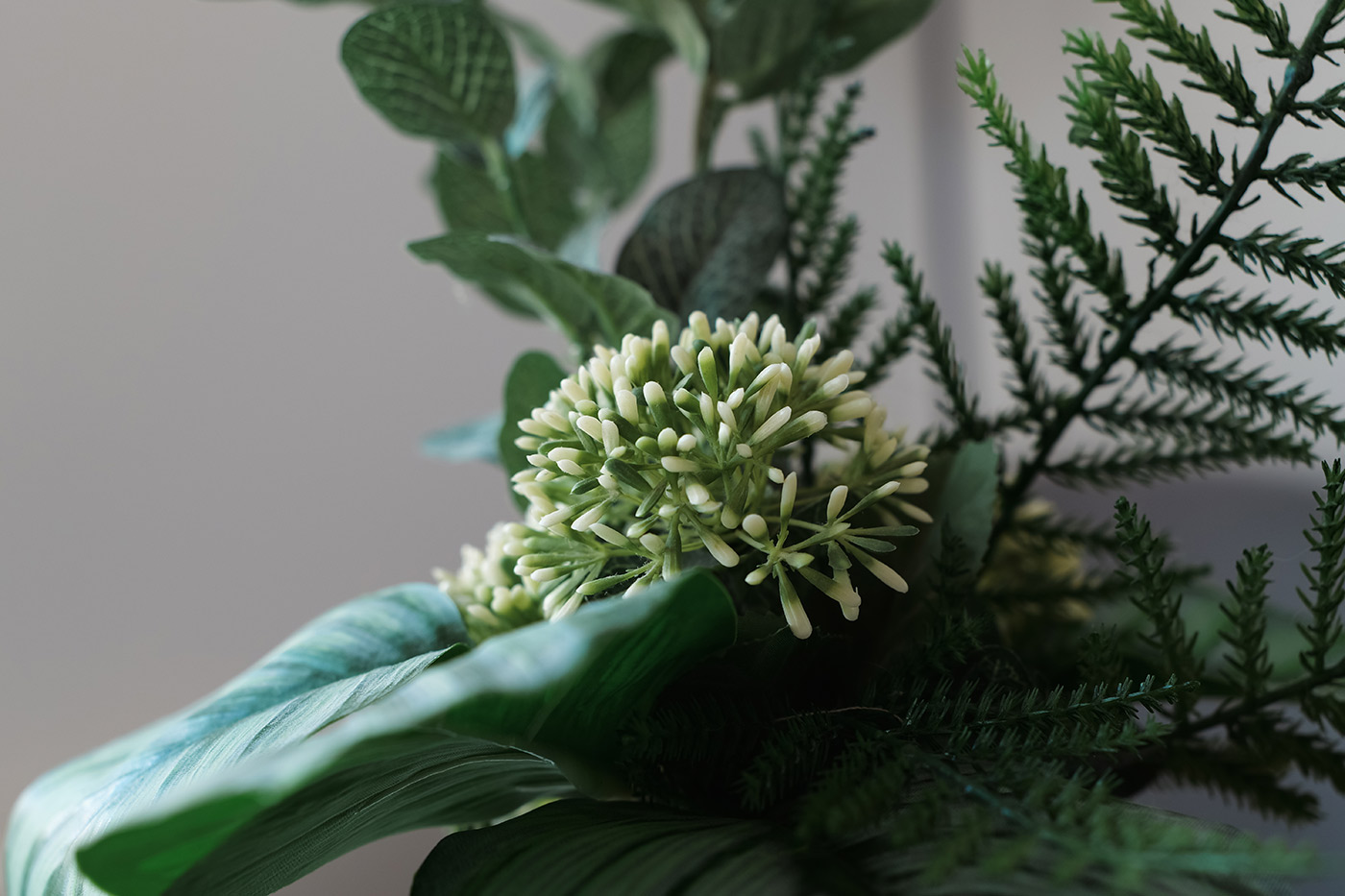
Sample 03, Panasonic Lumix S1 II with the 24-60mm f/2.8 lens @60mm. Camera settings: 1/100 sec. f/5.0. ISO 640
Handling and Build Quality
Both cameras retain a tank-like construction which the original S1, S1R II and many subsequent Lumix cameras are known for, with good levels of weather sealing, an intuitive button layout and a deep, ergonomic grip.
Both cameras feature an upgraded 5.76M-dot EVF, which is bright and sharp with a high refresh rate, and the rear screen is now tilt-and-vari-angle, which is perfect for shooting from a tripod or for handheld and gimbal recording.
Creators who already use an earlier S Series camera or MFT model will find a lot of cross-over in handling and menus, which come with the addition of LUTs, waveform monitoring and frame markers, to name a few. Since the launch of the Lumix S1R II, Capture One has supported Lumix cameras for both editing and tethered shooting, which continues with these two new models.
Both front and rear of the bodies include a Tally Lamp so that the talent and videographer are always aware when the camera is recording, and audio is available with either a 3.5mm microphone or DMW-XLR2 for XLR audio with 32-bit float recording and 4-channel high-res audio support.
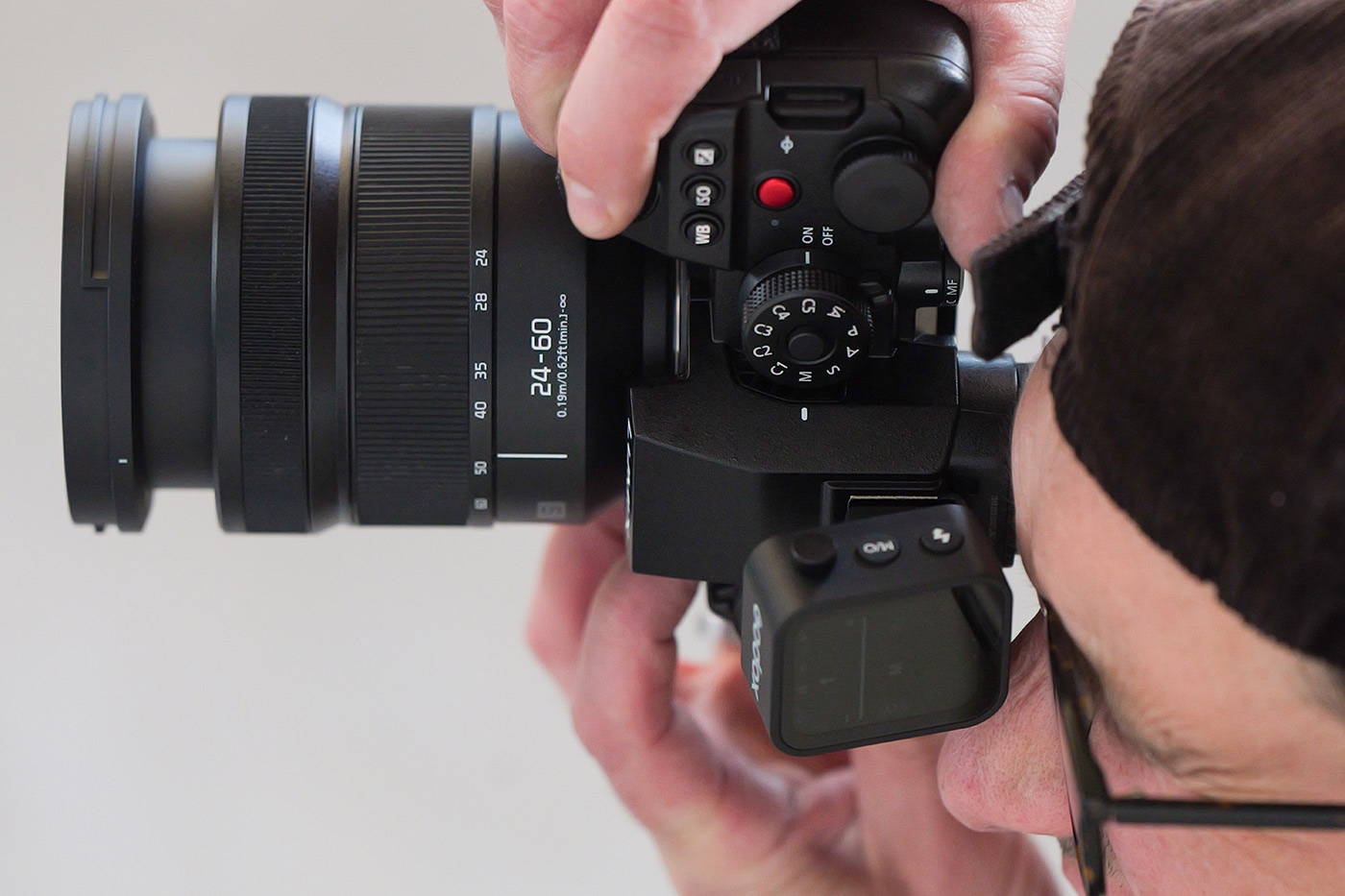
New L-Mount Panasonic Lumix S 24-60mm f/2.8
Launching alongside the two new bodies is the Panasonic Lumix S 24-60mm f/2.8 Lens (£899.00), which is a compact standard zoom with a constant aperture. It offers advantages for video creation such as a Hybrid Zoom feature, allowing you to extend the range up to 187mm for photos and videos, along with well controlled focus breathing for focus pulls.
Key features include:
- Covers wide-angle to short telephoto
- Close focus: 0.19m at wide, 0.33m at tele
- High magnification for close-up shooting (0.30x max)
- Excellent sharpness and controlled aberrations with ED/UED elements
- Weighs just 544g
- Accepts standard 77mm lens filters
This lens makes for a great kit option, outperforming the variable aperture on the existing 20-60mm kit lens, which comes in kits like the S5 II X With 20-60mm And 50mm Twin Lens Kit. The new lens also offers weather resistance, a quiet internal AF motor, and a 9-blade aperture for smooth bokeh, which is ideal for everything from portraits and landscapes, to street, video and close-up shooting.

Sample04, Panasonic Lumix S1 II with the 24-60mm f/2.8 lens @60mm. Camera settings: 1/100 sec. f/2.8. ISO 125
Connectivity on both bodies is identical, with comprehensive ports for advanced content creation. This includes a full-sized HDMI port, which supports on-camera video recorders such as the Blackmagic Video Assist 5” 12G HDR and Blackmagic Video Assist 7” 12G HDR for Blackmagic RAW recording, as well as Atomos monitors and recorders.
Standard 3.5mm microphone and headphone jacks are included, so you can record using your preferred on-camera microphone or wireless mic from brands like Rode, Sennheiser, DJI and many others, while monitoring your audio in real-time.
Additional ports include TC IN/OUT, a 2.5mm remote jack, USB Type-C (USB 10Gbps), and both 2.4GHz and 5GHz Wi-Fi, along with Bluetooth v5.0 for wireless connectivity.
It’s also worth setting aside some budget for a few essential accessories. A spare DMW-BLK22 battery is highly recommended, while the Lumix DMW-BG2 Battery Grip offers greater comfort and extended runtime. If you’re new to CFexpress Type B cards, you’ll appreciate the speed benefits, such as 1750MB/s read and up to 1500MB/s write with a Lexar Professional 128GB CFexpress Type B Card Gold Series.
Both the Panasonic Lumix S1 II and S1 IIE are a major upgrade from either the original S1, or the S5 IIX, especially when it comes to autofocus and in-camera professional video features. The S1 II is the more powerful option on paper thanks to its partially stacked sensor, but the S1 IIE offers an equally impressive toolkit for slightly slower-paced stills and video, making it especially good value if you don’t need the additional speed it provides.
Blackout-free bursts and high-speed Open Gate recording could be essential for you, however if not the Lumix S1 IIE delivers nearly all the benefits of the faster model in the same body, for £500 less. Add in the new 24-60mm f/2.8 zoom lens and you have a lightweight video-ready kit, which is perfect for most hybrid photo and video content.
As always, Park Cameras offers a fast and free trade-in service if you're upgrading from an older L-Mount body or any other unwanted camera equipment. Try our hassle-free service and use the money you make to offset against the cost of a brand new Lumix S1 II or S1 IIE camera.
Share this post:
By Nick Dautlich on 13/05/2025
Nick Dautlich
Senior Content Writer and Product Reviewer
Nick Dautlich is the Senior Content Writer and Product Reviewer at Park Cameras, with over 15 years of photography experience. A Sony Imaging Professional and expert reviewer, Nick has worked with major brands such as Canon, Sony and Nikon. His work is also featured on Vanguard World UK’s website, Capture Landscapes, and Shutter Evolve. Nick’s photography includes National Trust projects and magazine covers and he is passionate about landscapes and storytelling. Nick also enjoys hiking and teaching his children about nature. Learn more on his profile page.
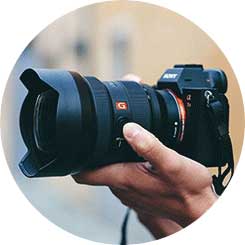
Trade in your old equipment
Fast and easy trade in service ensures your old gear is collected efficiently and you are paid quickly! It's very simple to trade in your unwanted photography gear. Just head over to our dedicated Sell or Part Exchange page, fill out the details, and we'll get back to you with an offer for your old gear. Take the cash, or put it towards the cost of your new gear. It's up to you! Find out more
sign up to the newsletter
Keep up to date on the latest photography news, events and offers. Sign up now